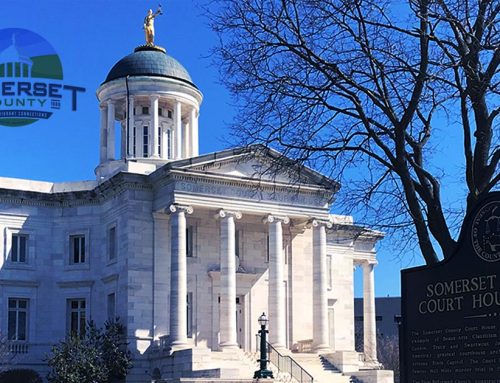Welcome to my Hunterdon County Market Report, where I draw on my extensive expertise to analyze the current dynamics of our local real estate market. In these monthly updates, I delve into the economic conditions and trends influencing our community’s property landscape. This report goes beyond standard data, offering hyper-local statistics that are hard to find elsewhere. By the end, you’ll not only understand the “What” of the Hunterdon County market but also the “Why.” With these insights, you’ll be well-prepared to make informed real estate decisions in 2024.
You can also find a version of the report covering Somerset County here.
“What’s” Happening in Hunterdon County’s Real Estate Market?
171 Under Contract Listings $639K Average List Price 36 Average Days on Market
“Rates have drifted up again in October.”
October saw an 11% Y-O-Y increase in sales statewide year over year. September saw a 2% rise. YTD we are down about 1%.
The Feds cut interest rates in September by .5% which was anticipated. Based on the October jobs report, more rate cuts are anticipated. Most likely another .25%.
Since July of this year, interest rates have dropped about 1% and then rose back to near the July levels again in late October. 📈🏠💰
In a broader context, the real estate market shows signs of returning to a more typical state. This usually starts at higher price points and moves down from there and from east to west. Fewer offers now exceed the asking price, and bids include contingencies such as mortgage approval, home sale, and inspection. The inventory of newly listed properties has remained steady as compared to previous months, contributing to an overall steadiness in total inventory. However, strong demand continues to outpace supply, leading to rising prices in our region. Already in higher price brackets, price pressure exists as those market segments move toward a balanced or even buyer-oriented market.
For those considering buying or selling, the answer lies within this analysis. The market strongly favors sellers due to the fast-moving inventory, which helps maintain price stability in our locality. However, there is a gradual shift toward a buyer’s market in the higher price ranges. Over the past years, prices have experienced significant increases—nearly 12% in 2020, 18% in 2021, 9% in 2022, and 11% in 2023. While a more modest 6% growth was anticipated for 2024, homes priced at $900K and above are seeing increased inventory, impacting their supply and demand dynamics.
Conversely, prices below this threshold continue to rise, although the rate of increase has decelerated. Increases will likely be more moderate in future years but still show positive growth. The fifty-year average price increase remains below 5 percent.
🏡📈
Market Statistics for Hunterdon County:
- Last month, the market saw a decrease in new inventory, with 96 new listings, compared to 101 in the previous month. This is also below the 140 new listings seen in the same month in 2023.
- As of the beginning of this month, the available inventory was 234 units, up from 233 units last month. And this is still below the 242 units available in the same month last year. A lot of this new inventory is in our higher price points.
- The number of units that went “under contract” last month was 171, up from the previous month’s 133 units and up from 28 units in the same month last year.
- Over the past month, the average number of days on the market has increased to 36, indicating a decrease in buyer demand.
- Currently, the overall month’s supply of inventory stands at 1.37 months, indicating it is still a strong seller’s market. This trend holds for properties priced under $1,000K.
Considering the current market conditions, where the supply and demand dynamics favor sellers, postponing your sale until later in 2024/25 may not be the best choice. The market is likely nearing (or at) its peak, and it’s unlikely that prices will remain elevated for much longer. Therefore, it would be wise to capitalize on the current situation and list your property for sale now.
In summary, acting promptly in the current market could be advantageous for sellers.
New Jersey Residential Real Estate Market Forecast
The summer and early fall of 2024 saw solid activity in both listings and sales.
Although inventory levels have increased, new listings continue to sell quickly, leading to strong sales and favorable prices for sellers. However, the biggest challenge in 2024/25 remains finding a more suitable home and securing an affordable mortgage.
For buyers, recent declines in interest rates (and speculation that they could drop further) have brought renewed optimism compared to a few months ago. This has also impacted trade-up buyers in a similar way.
However, interest rates have still priced many first-time buyers out of the market and made most trade-up buyers hesitant to move. The recent fluctuations in rates provide limited hope in this area. Nevertheless, now is still a good time to buy a home, as stabilized market conditions and reduced competition create favorable terms. Additionally, refinancing remains an option if rates continue to fall in the future.
Hunterdon County Real Estate Market Inventory Breakdown By Price For Last Month:
| October | October | Total | ||
| Hunterdon County | New | Under | Active | Months’ |
| Listings | Contract | Listings | Supply | |
| Condos/Town Houses * | 18 | 43 | 31 | 1 |
| Over 55 Communities * | 2 | 3 | 3 | 1 |
| $000K to $199K | 2 | 2 | 4 | 0 |
| $200K to $299K | 5 | 18 | 16 | 1 |
| $300K to $399K | 11 | 25 | 19 | 1 |
| $400K to $499K | 15 | 21 | 34 | 2 |
| $500K to $599K | 17 | 29 | 29 | 1 |
| $600K to $699K | 6 | 25 | 18 | 1 |
| $700K to $799K | 11 | 9 | 22 | 2 |
| $800K to $899K | 5 | 16 | 18 | 1 |
| $900K to $999K | 8 | 12 | 14 | 1 |
| $1,000K and Up | 16 | 14 | 60 | 4 |
| Totals for October | 96 | 171 | 234 | 1 |
| Average Price | $1,015,265 | $638,894 | -37.1% | |
| Average DOM | 36 | |||
| * Included in $ breakdowns |
- 39% of sales in houses< $500,000
- 37% of sales in the $500,000 to the $800,000 range
- 24% percent of total sales (or 10 in total) in houses >$800,000
Hunterdon County Real Estate Market Inventory Breakdown By Municipality For Last Month:
| Hunterdon County | Active Listings | Under Contract Last Month | Months’ Supply |
| Alexandria Twp. | 7 | 7 | 1 |
| Bethlehem Twp. | 11 | 3 | 4 |
| Bloomsbury Boro. | 2 | 1 | 2 |
| Califon Boro. | 1 | 2 | 1 |
| Clinton Town | 5 | 1 | 5 |
| Clinton Twp. | 17 | 15 | 1 |
| Delaware Twp. | 13 | 5 | 3 |
| East Amwell Twp. | 8 | 6 | 1 |
| Flemington Boro. | 2 | 3 | 1 |
| Franklin Twp. | 8 | 1 | 8 |
| Frenchtown Boro. | 4 | 2 | 2 |
| Glen Gardner Boro. | 7 | 4 | 2 |
| Hampton Boro | 2 | 6 | 0 |
| High Bridge Boro. | 7 | 3 | 2 |
| Holland twp. | 10 | 10 | 1 |
| Kingwood Twp. | 9 | 6 | 2 |
| Lambertville City | 14 | 8 | 2 |
| Lebanon Boro. | 2 | 3 | 1 |
| Lebanon Twp. | 11 | 4 | 3 |
| Milford Boro. | 3 | 3 | 1 |
| RaritanTwp. | 22 | 34 | 1 |
| Readington Twp. | 29 | 20 | 1 |
| Stockton Boro. | 0 | 1 | 0 |
| Tewksbury Twp. | 22 | 11 | 2 |
| Union Twp. | 9 | 9 | 1 |
| West Amwell Twp. | 9 | 3 | 3 |
| Totals | 234 | 171 | 1 |
No areas had no sales last month:
Six areas reported one sale each last month:
- Bloomsbury
- Califon
- Clinton Town.
- Franklin Twp.
- Frenchtown
- Stockton
Hotspots:
- Clinton/Clinton Twp. – 16 Sales
- Raritan – 24 Sales
- Readington -20 Sales
- Tewksbury Twp.- 11 Sales
In the past month, approximately 41% of sales were concentrated in the hotspot areas. Here’s a breakdown of the average prices:
- New Listings Entering the Market: The average list price for these new listings was $1,015,265.
- Units Going Under Contract: The average list price for units that went under contract was $638,894.
- This represents a 37% difference between the average prices of new listings and units under contract.”
In summary, understanding these price dynamics can provide valuable insights for buyers and sellers in the real estate market.
Note:
Note:
If you want to obtain a competitive price for your property based on its location and uniqueness, you can contact me at (908) 304-4660. By leveraging Coldwell Banker’s big data technology and Artificial Intelligence capabilities, you can gain a unique advantage in the market. I can demonstrate your area’s latest age and earnings breakdown, including where people are moving from and how to market directly to those specific areas and demographics. This approach will maximize the selling price while reducing the time on the market. Accurately priced and marketed homes tend to sell faster with the assistance of a seasoned real estate industry veteran and a local area expert.
“Why” is it happening…
New Jersey’s Economic Drivers:
New Jersey Home Sales and Inventory levels:
Contrary to what you see on the news, the Hunterdon and Somerset county markets remain strong. While the network news is correct for some areas in the country (mostly those with heavy new development sales), my report focuses only on our two counties in NJ, which consists primarily of resales. Our only new construction is primarily on the high end of the market.
- YTD, sales across NJ declined by 1% through October.
- Locally, we saw a seasonal increase in sales in October Hunterdon and a decrease in Somerset County.
- There are early signs of some pullback in pricing at the higher price tiers, but the lower tiers are still seeing price increases, just not as aggressive as in the past.
- First-time buyers are cooling down considerably due to higher pricing (price resistance), inventory shortages, and interest rates. Their purchasing power has decreased for these reasons, and many have been priced out of the market for now.
- Potential sellers find it challenging to locate suitable housing in the current market and are hesitant to list until they do. They are also dismayed by higher interest rates than they currently have in place on their current homes and, for the most part, are not willing to make a move unless they have an urgent issue, such as a life event or job transfer. About the same amount diminishes their purchasing power, but their equity increases offset it.
- Current mortgages show that nearly 70% are under 4%, and 90% are under 5%.
- The current month’s supply of inventory in Hunterdon County remains just under 1.3 months. In Somerset County, it is around 1.5 months due to the rapid sales of new listings (velocity) as the market remains active.
- Hunterdon and Somerset County have more inventory than a year ago. The unsold inventory in New Jersey has steadily decreased since reaching a peak of over 20,000, and it is down to about 15,400 today.
- Inventory increases occurred Y-O-Y in all price points except the under $400K as of the end of October, with the under $400K price tier decreasing by 18% and the $400K to $600K and the $ 600K to $1,000K price tier increasing by about 5 and 18% respectively.
- New housing development has not kept up with population growth and is now focused on the rental market.
Interest Rates:
- Interest rates are hovering around 7% again in early November rising about 1% since September.
- The Fed cut rates by .5% in September which was already built into the current rates as they were widely expected.
- Economic conditions since then caused the rise back to 7%.
- It is further anticipated that rates will drop further based on recent economic indicators. Time will tell.
- Many buyers are considering attractive ARM rates and creative other buy-down plans as alternatives.
- Based on the current rates, first-time buyer mortgage applications have dropped, but restructuring debt and paying down high-interest items remain active.
- The Fed’s efforts to slow things down have resulted in the above.
National Job Front:
- Total nonfarm payroll employment increased by a mere 12,000 in September, and unemployment remained at 4.1 percent, the U.S. Bureau of Labor Statistics reported. Employment continued growing in government, health care, social assistance, and construction.
- At the same time, job gains for August and September were revised down by 81,000 and 31,000 respectively. This gets little exposure on the network news channels.
- And, there was an annual correction of -818,000 jobs being created vs. previous reports as well. Some of this was blamed on the recent storm damage.
- A large portion of the new jobs was part-time, indicating that people are finding “side hustles” to help account for inflation.
- It’s important to note that this number includes natural job growth of about 175K per month.
- The analysts also state that many new jobs were lost as small businesses failed and those people reentered the labor force.
- The labor force participation rate held at 62.4 percent. This rate is calculated by dividing the sum of all workers employed or actively looking for a job by the working-age population. It also fluctuates due to people taking a second job to meet ends.
- Many people were resigning to pursue new career paths due to perceived health risks, the desire for more remote work, and a better work-life balance. New technology-based jobs are affecting this trend. That trend now seems to be reversing, especially the larger firms.
- For those under $50K, there is even some incentive not to work and collect benefits, contributing to the current unemployment rate.
- The lower end of the job market has benefited the most from this trend, with higher starting pay rates competing for the lack of workforce. Jobs starting in the mid to upper $20 per hour are already being offered.
New Jersey Job Front:
- Statewide, we saw a decrease in new jobs of 23% in 2023.
- So far in 2024 NJ has seen a decline of 93%
- The unemployment rate in NJ for September was 4.7%, still quite a bit above the national rate.
- NJ has gained about 3,100 YTD through September of 2024 compared to 43,000 the prior year.
- Job losses are still prevalent in industries such as construction, food services, and accommodations. Retail and wholesale trade are also experiencing a downturn in some states. Even health care, social assistance, and manufacturing are shedding workers.
- NJ was hit harder than most states in the early months of the pandemic, but it has made a remarkable recovery since then.
- It should be noted that the numbers of jobs in New Jersey run a month behind national ones.
Rental Market Trends:
- Rental prices in New Jersey continued to increase in 2024, with a year-over-year average of just under 3%. They are currently averaging just over $2,300 per unit. However, recent data shows a slight decrease in these prices.
- The vacancy rate in central New Jersey is currently at 4.3%, indicating a limited rental supply and leading to a rise in rental prices.
- The rental market typically includes low-end buyers who opt to rent due to a shortage of available inventory. However, the recent constraints in the mortgage market have also contributed to the increase in this sector.
New Jersey Foreclosures:
- NJ’s delinquency rate (more than 90 days past due) has decreased, which is a positive development.
- NJ’s current foreclosure rate remains low at 1.1%.
- Nationally, $11 trillion in equity is needed to protect homeowners during a potential recession.
- The average FICO score of mortgage holders is over 750, higher than during the 2008 financial crisis.
- A slowdown and recession could still cause job losses and put mortgages at risk.
- A housing bust is not predicted to occur since there is a lot of positive equity in houses, thanks to recent appreciations.
Real Estate Market Recap
Forecast:
- The COVID-19 pandemic seems to be over (with only minor flare-ups).
- Supply chain shortages have affected inflation, and concerns remain that undersupply could cause further price increases.
- The consumer price index, which rose by .2% in September, continues to cause havoc on auto, finished goods, and energy pricing and is the enemy of long-term interest rates.
- Mortgage rates have reversed their September pullback, and are now back to the 7% range.
- The local inventory accumulates primarily in the more expensive price ranges, and the housing affordability index has increased slightly (based on wages, rates, and home prices). As a result, mortgage payments now have an all-time high gross percentage (which slows spending in other sectors).
- Due to COVID-19 and recent unrest in NYC, interest in living in more suburban counties such as Hunterdon and Somerset has disappeared. In fact, many companies are now requiring more on-site presence reversing the move westward.
- Retailing and using vacant industrial space will transform to meet the new altered demands and lifestyles.
- The local market will have to adapt to the new suburban renaissance regarding where people will work and what they need to adapt.
- The lingering question has been, “Can we keep this momentum up with low to slightly rising inventory?” as predictions for slower sales and price increases in 2024 have already been made. Price increases were about an 11% increase in 2023 in NJ. The new year sees more normalized increases (based on your price points) of 6%+ (but that is what we also said last year).
- Days on the market in our area have risen over the past month, showing buyers are becoming seasonally less active.
- However, change will result in a trend towards a more normalized environment if inventory continues to come onto the market and the first-time buyer fatigue that we have seen continues.
- Younger (millennial) buyers are coming of age in the pipeline for at least the next four to five years, which will continue to put more demand on the first-time buyer market, usually under $400K.
- Housing markets are adding much of the new inventory at higher price points, which is normalizing those results. Change usually happens from the top down and from east to west.
- In a nutshell, 2024 is finishing a lot like 2023 with a little more inventory and a little bit better rates.
This is substantial information, and the situation is evolving daily. Nevertheless, it appears to be moving in a positive direction for now. If you require further clarification or have any concerns about how this could impact your circumstances, please don’t hesitate to contact me at (908) 304-4660. I’m always available to chat and assist you in gaining a better understanding.
Note: This information is presented as a public service by Joe Peters of Coldwell Banker Residential Brokerage. Although reasonable care has been taken to provide this information, it is advised that you seek the guidance of a professional sales agent and avoid making any decisions solely based on my views, gathered trends, and statistics. I am not responsible for any consequences of using this data.
If you have any questions or would like to talk out your situation, please call 908-304-4660
Home Prices Forecast To Climb over the Next 5 Years [INFOGRAPHIC]
You can ask me a question or request a monthly newsletter copy here.





